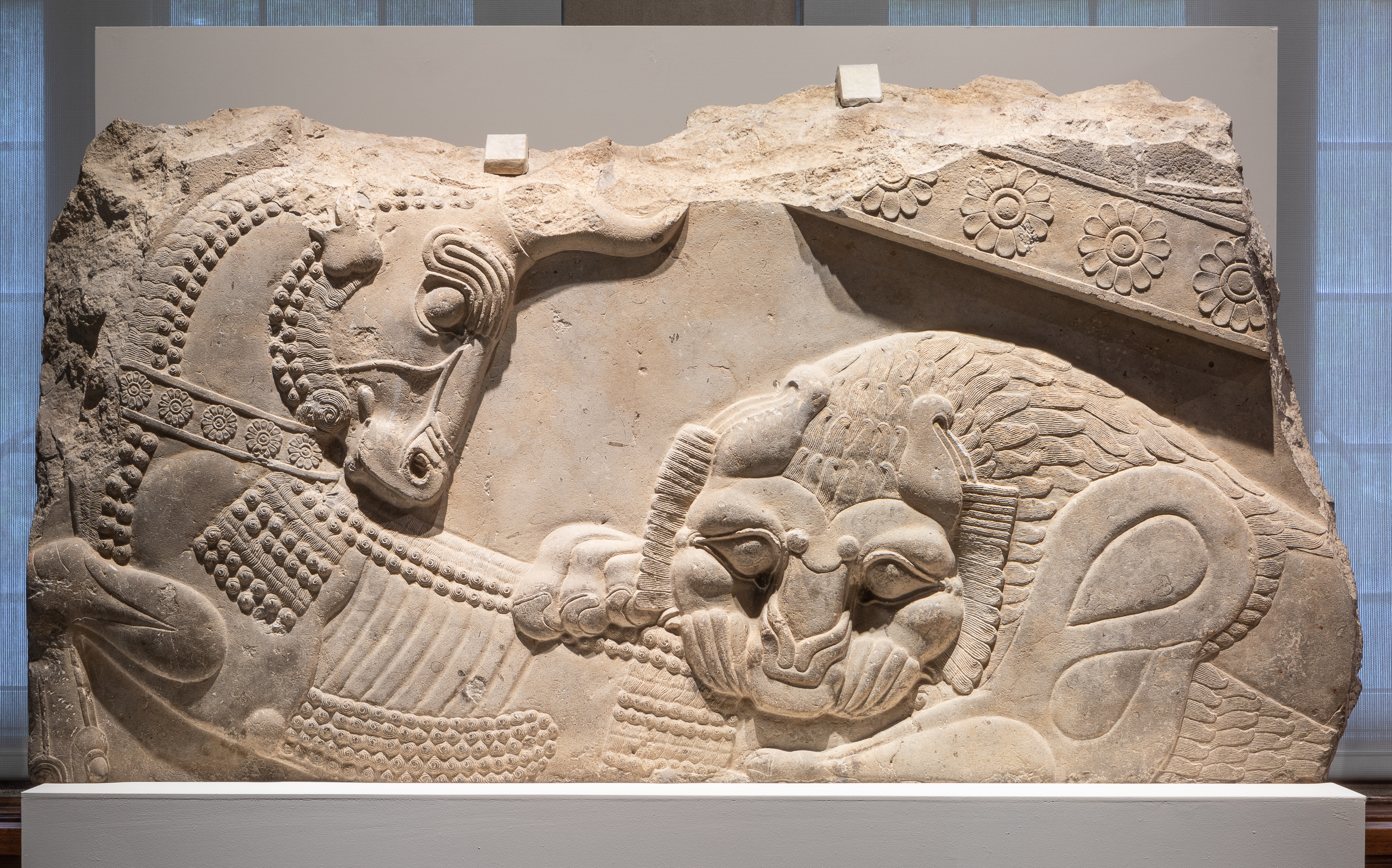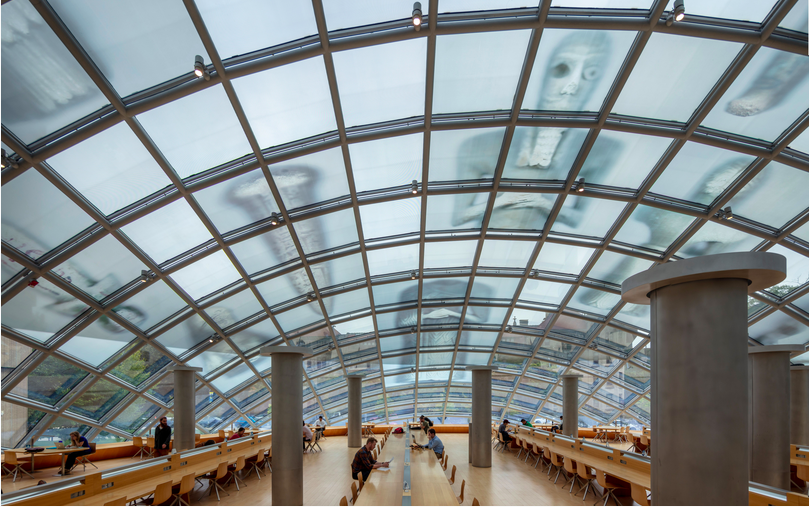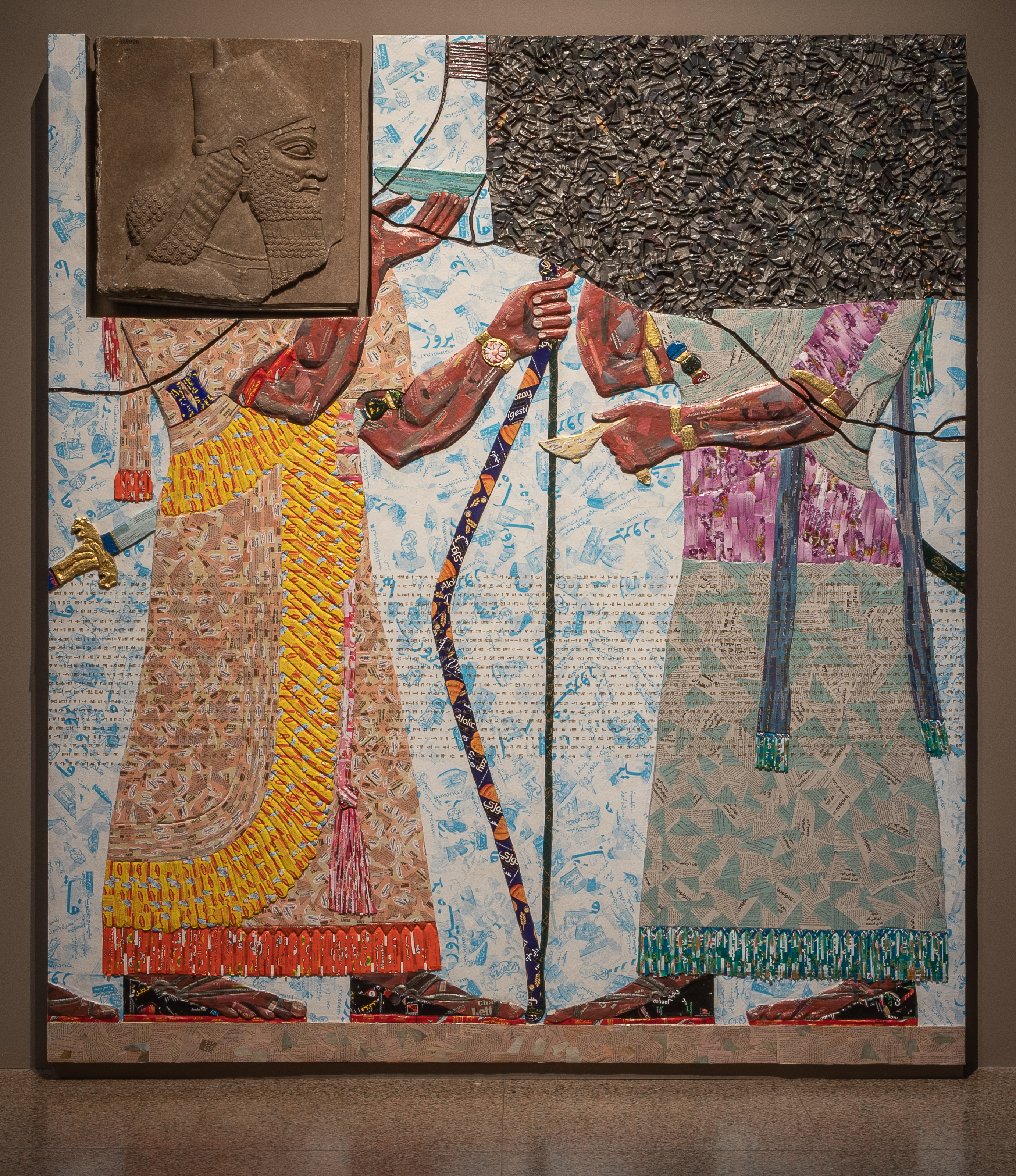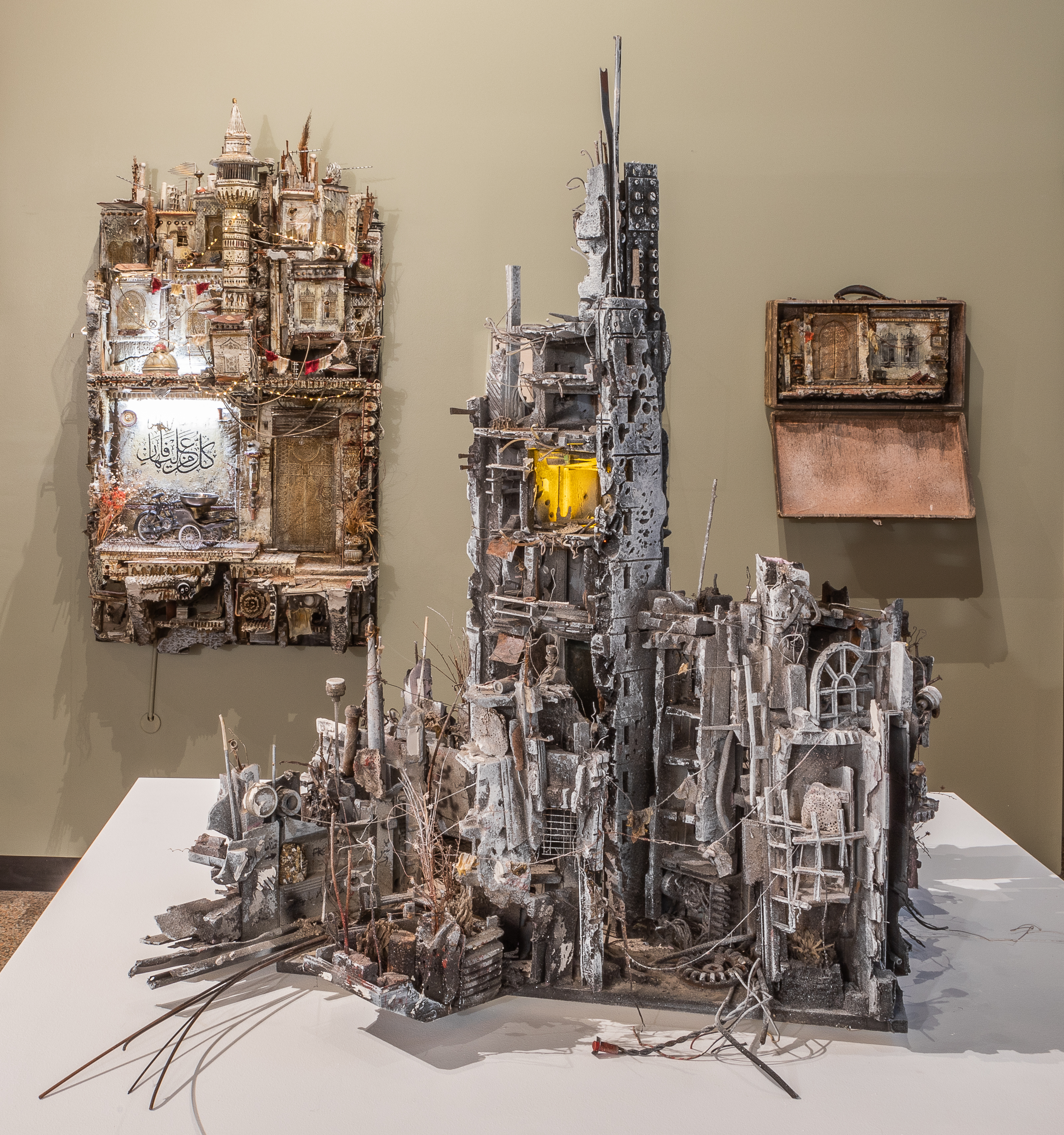By The Silverman Group
The Oriental Institute of the University of Chicago kicks off its centennial celebration Saturday, commemorating 100 years of pioneering research and study of the earliest civilizations in the ancient Middle East.
The OI Museum exhibits the largest collection of ancient Middle East artifacts in the United States, with more than 350,000 artifacts mainly excavated by OI archaeologists and some 5,000 on display to the public on the UChicago campus. Following a multimillion-dollar gallery renovation, the OI is displaying more than 500 artifacts to the public for the first time in conjunction with its Centennial.
One such artifact, a 4,000-pound ancient Persian stone relief, was just returned to the OI Museum after 80 years on loan to the Boston Museum of Fine Arts. Carved from black limestone and dating back nearly 2,500 years, the nearly 6-by-4-foot relief shows a lion and a bull locked in combat.
 Michael Tropea
Michael Tropea
It was once part of a monumental staircase of a royal palace at Persepolis, the great dynastic city of the Achaemenid Empire and a UNESCO World Heritage Site. n 1931, the OI began a pioneering excavation of the site that spanned eight years and required hundreds of workmen. Most of what was excavated at the time remained on site at Persepolis, but the OI was given several monumental sculptures, in addition to smaller finds, by Iranian authorities in recognition of the work that went into uncovering and preserving the ancient site.
Additional artifacts newly on public display at the OI Museum for the Centennial include:
* A fragment of the oldest known manuscript of A Thousand and One Nights.
* Cuneiform tablets demonstrating the development of the earliest writing systems in Mesopotamia and Iran.
* Artifacts associated with making and drinking beer in Mesopotamia.
* Objects of everyday life, including cosmetic containers, grooming kits, amulets, and toys.
* Statues from the famous Tell Asmar Hoard that were excavated by the OI in Iraq.
* An Egyptian coffin for an ibis, a bird sacred to Thoth, Egyptian god of wisdom, knowledge and sciences.
In conjunction with its centennial, the OI has also collaborated with internationally acclaimed contemporary artists Ann Hamilton and Michael Rakowitz, as well as Mohamad Hafez, who will serve as the OI’s first interpreter-in-residence.
Hamilton has created a new large-scale installation entitled aeon in the Grand Reading Room of UChicago’s Joe and Rika Mansueto Library, affixing to its massive glass dome a series of translucent images of OI artifacts produced using first generation scanners.
 Tom Rossiter
Tom Rossiter
Rakowitz has collaborated with the OI Museum to create a reappearance of a relief from the Northwest Palace at Nimrud, destroyed by Isis in 2015. Integrating an ancient fragment from the OI collection, his piece uses contemporary Middle Eastern newspapers and packaging from northern Iraqi foods.
 Michael Tropea
Michael Tropea
Hafez’s works at the OI Museum, as well as his programming as the OI’s first interpreter-in-residence, explore the current political turmoil in Syria and throughout the Middle East, addressing issues associated with war and compulsory displacement.
 Michael Tropea
Michael Tropea
The art installations from Rakowitz and Hafez will be on view at the OI Museum during normal visitor hours through June; Hamilton’s installation at UChicago’s Joe and Rika Mansueto Library is open to the public on Saturdays from 9 to 11 a.m. through October.
Visitors without a UChicago ID can enter to see the installation by obtaining a visitor pass from the ID and Privileges Office in Regenstein Library, which is connected to the Mansueto Library. For aeon, Krueck + Sexton Architects facilitated integration of art and architecture and served as technical advisor to Hamilton and UChicago. ER2 Image Group provided support to Hamilton’s vision in the production and installation of aeon.
The new artworks and artifacts, as well as a special exhibition, “We Start Here: The OI at 100,” commemorating the highlights of a century of OI discovery and research, will be unveiled at the public OI Centennial celebration on Saturday from 1 p.m. – 5 p.m. at the OI Museum (1155 E. 58th Street). Free programs that afternoon include music performances from the Hyde Park Jazz Festival and an artifact “scavenger hunt” for children. OI faculty and researchers will also be on hand in the galleries to discuss the collections and answer questions.
For more information, OI Museum hours, and a full listing of OI Centennial events and programming, visit oi100.uchicago.edu.
ABOUT THE OI
Both a pioneering interdisciplinary research center and a world-renowned museum, the Oriental Institute (OI) of the University of Chicago aims to understand, reveal, and protect the earliest civilizations.
Since its founding in 1919, the OI has conducted field-defining research across the Middle East, including excavations and field projects, linguistic research deciphering ancient languages, creating comprehensive dictionaries, reconstructing the histories, literatures and religions of long-lost civilizations, and preserving the region’s imperiled cultural heritage.
OI research has uncovered new ways of seeing what connects humans and why – providing insights into the ancient world and the challenges societies still face today, from environmental change to immigration to disruptive technologies.
OI field research continues today in Egypt, Israel, Jordan, Iraq, Turkey, and Afghanistan. Much of this research is on display at the OI Museum, located on the UChicago campus and home to the largest collection of ancient Middle Eastern artifacts in the United States with 350,000 objects.
–
See also:
* Tribune: The Oriental Institute Has A 100th birthday Makeover Wish: To No Longer Be Chicago’s ‘Hidden Gem.’
* UChicago News: Art Installation Inside Mansueto Library Dome Transforms OI’s Ancient Figures.
* Hyde Park Herald: U Of C’s Oriental Institute Celebrates Centennial.
–
Comments welcome.
Posted on September 23, 2019


